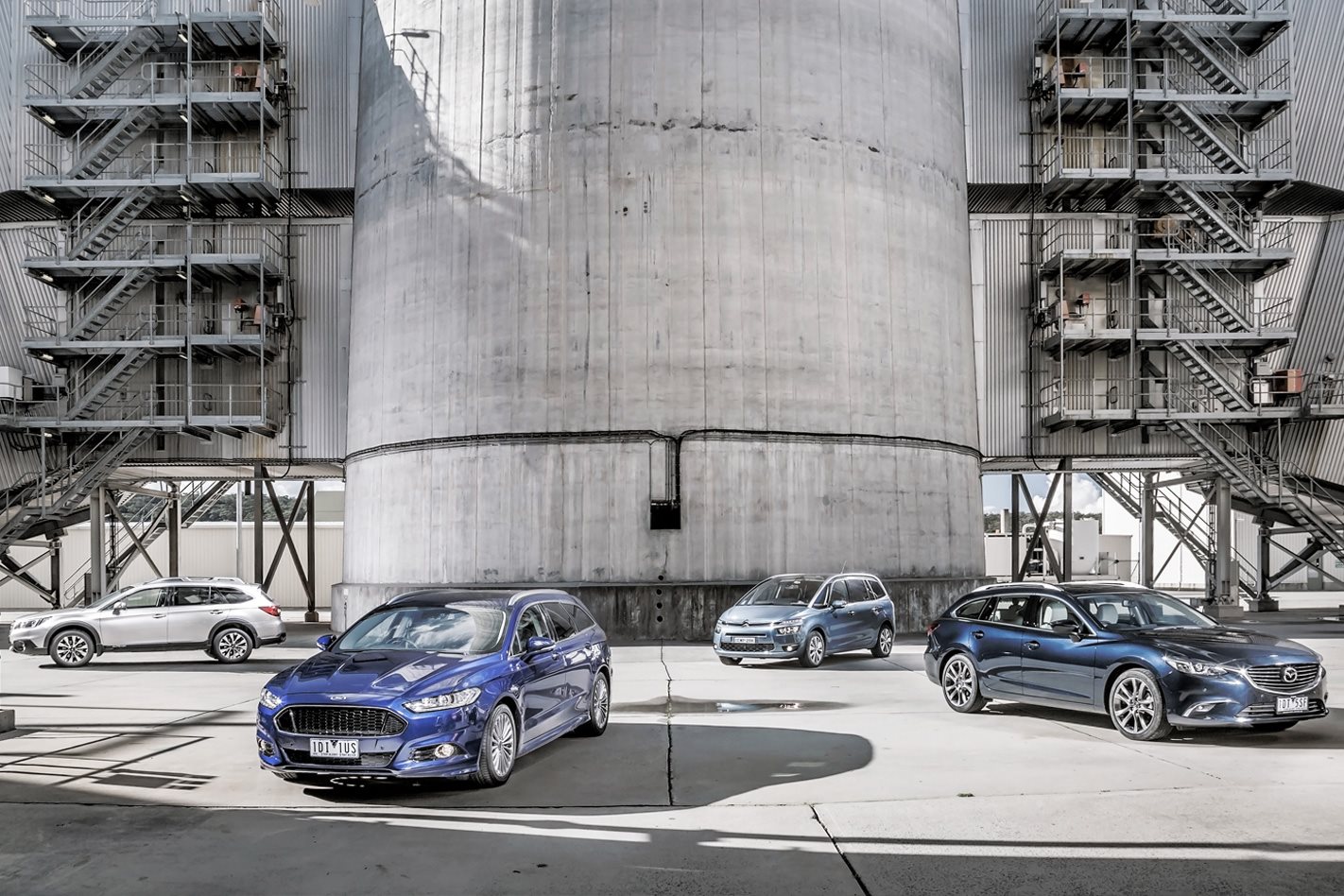Mid-size passenger wagons compared, in premium trim. In a world gone mad for SUVs, what will happen to the classic family stalwart?
WHO would’ve thought that the traditional station wagon would become an anti-fashion statement? Once upon a time, that ignominy belonged to families lumped with a 55- or 60-series Landcruiser, but today the aspirational vehicle of the working and middle classes appears to be an SUV of some kind, in all its rapidly expanding forms. Which leaves the mid-size wagon where exactly?

The beauty of indulging in a medium wagon from a bourgeois brand is what you get for the money. Close to 50 thousand smackeroos is plenty to spend on a top-shelf model, but you’ll be left wanting for almost nothing. And if being true to type seems a little predictable, as championed by Ford’s all-new Mondeo Titanium wagon and Mazda’s freshly facelifted 6 GT wagon, then how about Subaru’s new-generation, all-wheel-drive Outback Premium or Citroen’s haute couture seven-seat Grand C4 Picasso for the same money?
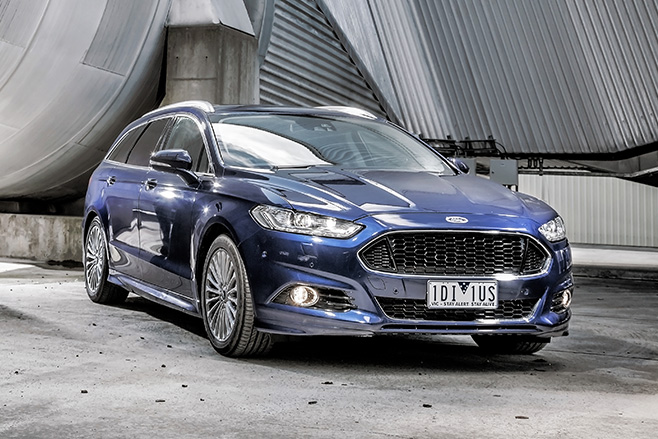
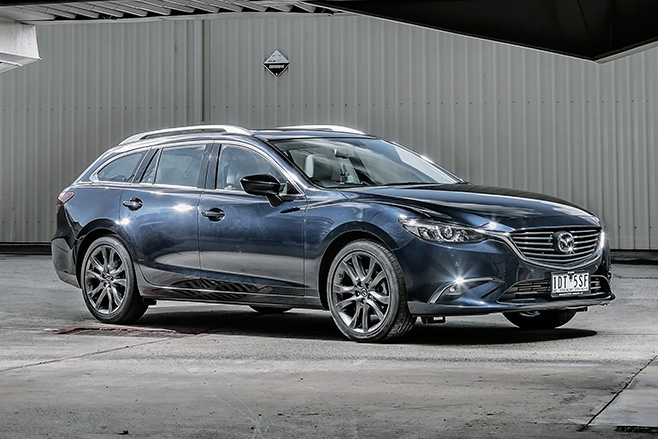
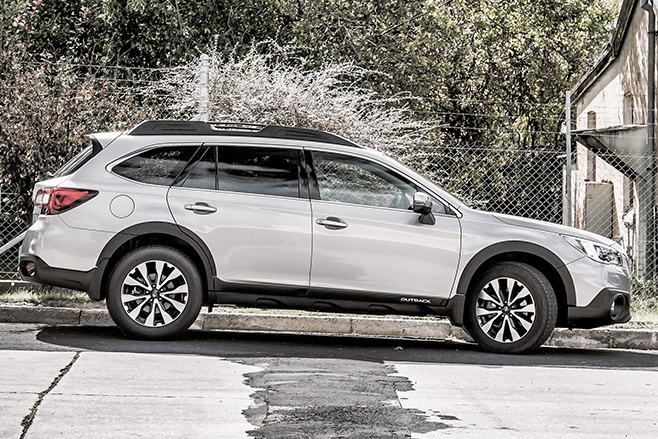
The Citroen is the odd man out, for good reason. As one of the sexiest people-movers of all time, it’s so goddamn stylish that its MPV categorisation carries minimal ‘mumsy’ baggage. And it proves you can have seven seats for the price of five, with a slimline pair best suited to children or small adults folding away into its rear floor, without affecting boot space.
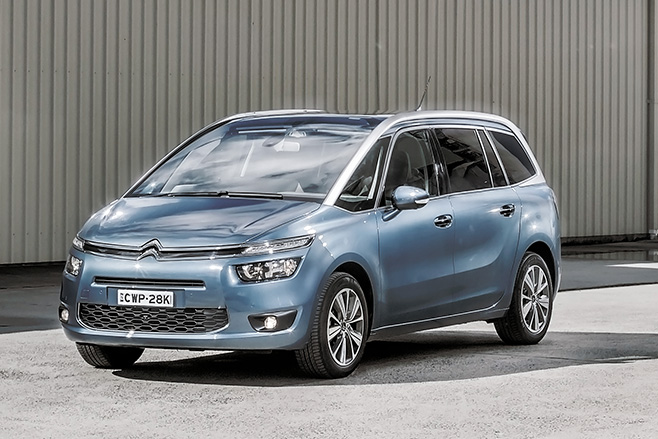
All four contenders tread a similar path in the engine department, with a few key differences. Unlike its six-speed automatic rivals, the Subaru uses a ‘Lineartronic’ CVT to power all four wheels, and unlike its 2.0-litre four-cylinder turbo-diesel compatriots, the Mazda boasts a 2.2-litre capacity for its brilliant ‘SkyActiv-D’ turbo-diesel.
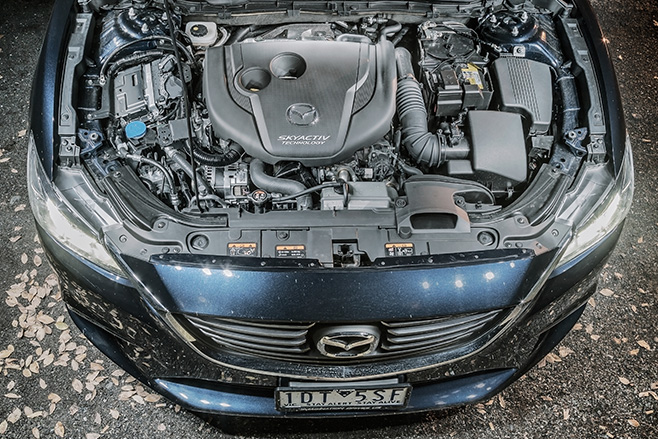
And boy can it give. The faster the pace, the clearer the Mazda’s lead, though Ford’s ageing but able turbo-diesel runs it surprisingly close. Where the 6 sounds genuinely sporty, the Mondeo still sounds like a diesel, though it’ll rev to nearly 5000rpm while pulling strongly – much better than the somewhat breathless Citroen – and it boasts an excellent dual-clutch gearbox that’s as lag-free as the Mazda’s auto.
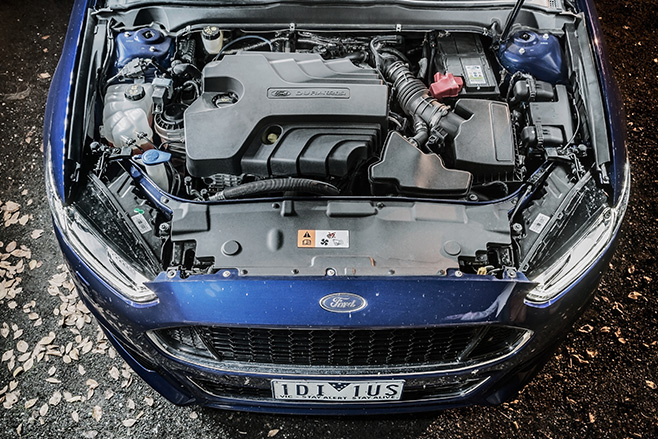
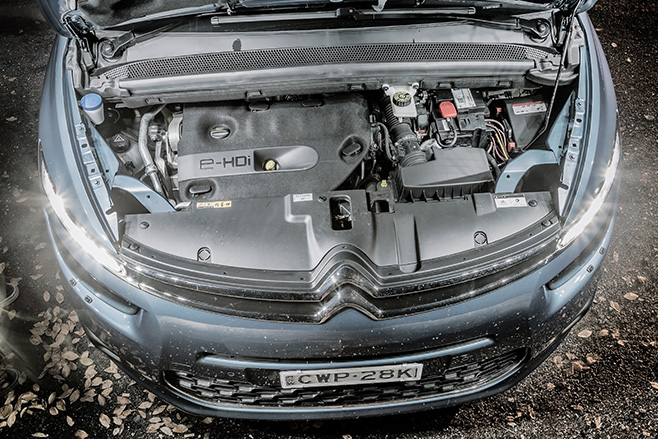
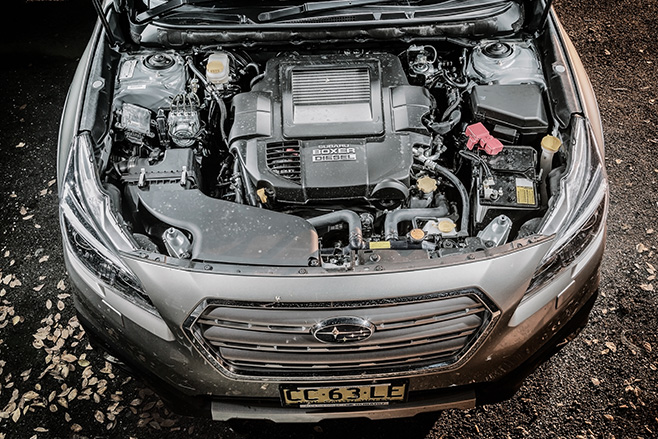
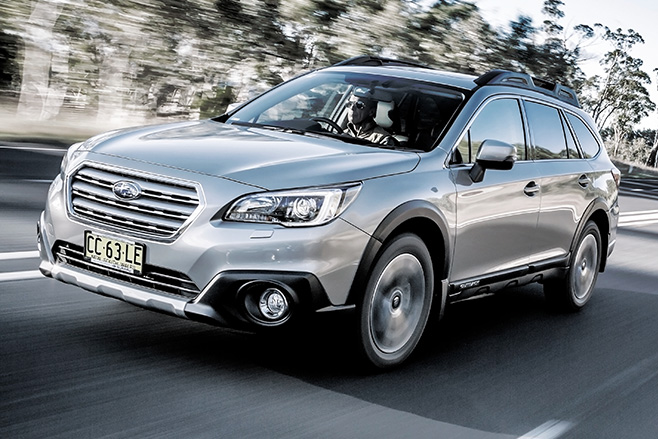
At a decent clip, its steering isn’t too bad, being reasonably accurate and less intrusively weighted, but at more sedate speeds it proves Outback’s main dynamic weakness. Often heavy and treacly, to the point where it can make your thumbs ache driving at a quarter-to-three wheel position, the Outback’s Oz-tuned steering set-up improves in really twisty stuff. But it ultimately can’t escape its jacked-up reality. Those all-terrain tyres exacerbate its lack of front-end point, making it understeer more than it should. And while there’s a good chassis underneath the Outback, without the Liberty’s road-biased tyres and lower centre-of-gravity, it’s all washed down the drain, along with any memories of GT and Spec-B wagons.
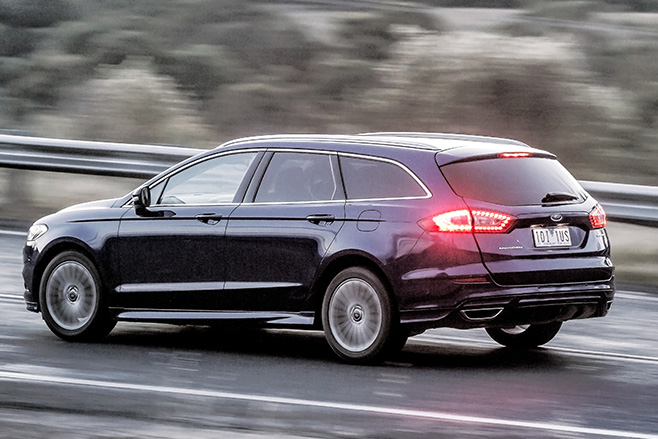
As a sporty Euro-flavoured, Japanese-engineered wagon, the Mazda 6 occupies the territory once dominated by Subaru’s Liberty. With sharp, carving handling and loads of grip, not to mention that stunning turbo-diesel engine, the 6 GT is a proper sports wagon that also happens to look the part. It’s a real driver’s car.
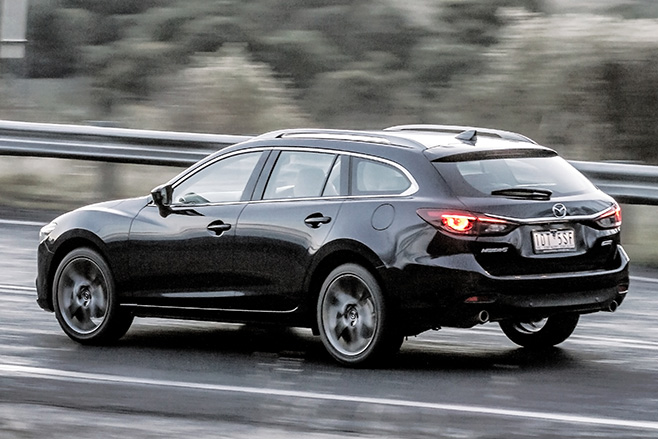
Surprisingly, the Citroen has both the firmest ride and the most road noise, though neither are intrusive enough to be offensive. What it does have is excellent damping control and an unexpected ability to tackle roads of all kinds with enthusiasm and amusement, begging the question “is this the greatest-handling MPV of all time?”

But what a view. The Citroen’s ‘Zenith’ windscreen enables its sunvisors and front headlining to be slid right back to above the driver’s head and, combined with a full-length glass ceiling, it gives a unique mise-en-scene best not experienced in the height of summer. Thankfully, all three rows get climate-control vents, the middle with its own fan controls.
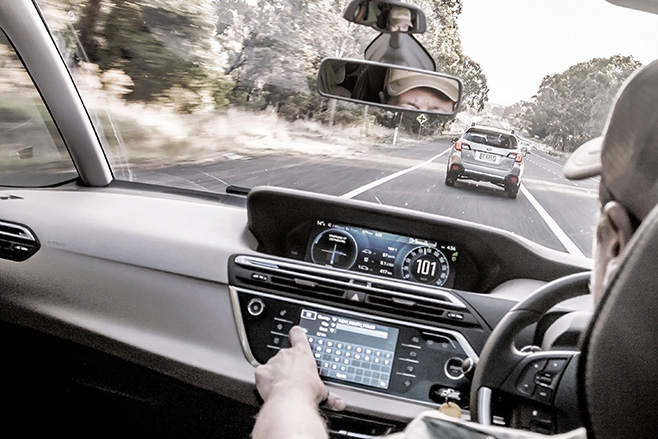
Like its ride quality, the Citroen’s seats are firmly padded and at their best in the front row. With supportive bolsters and three-position side armrests, the C4’s front buckets are great for big distances. Its middle trio aren’t quite as comfy, with hard backrests lacking a bit in the lumbar-support department, but each seat has its own fore-aft adjustment and will semi-recline, like on a plane, with neck-pillow headrests if you option full leather. Indeed, the Citroen is the only true five-seater here, plus it has another pair stashed in the rear floor, and easily the biggest boot (632-793 litres beneath the parcel shelf, depending on middle seat position).

But the Mondeo can’t match the facelifted Mazda 6’s interior presentation, nor its feeling of expense. The Mazda looks and feels premium, like a Japanese Audi, and it’s this sort of quality that will keep buyers hunting in the mainstream-brand wolf pack.

The Subaru doesn’t have the Mazda’s colour and design flair, but is of a similar quality. It’s hugely roomy, with a commanding view from every position, though you sit on the Subaru’s seats, not in them. It’s closer to being a full five-seater than the Ford and Mazda, with a rear backrest that can be reclined in three positions, and it uniquely squeezes a full-size 18-inch alloy spare wheel into a package that also includes a rear driveshaft. Plus, Subaru’s new infotainment touchscreen thingy is superb – especially compared to the fiddly piece of shite it replaces – with terrific audio quality.
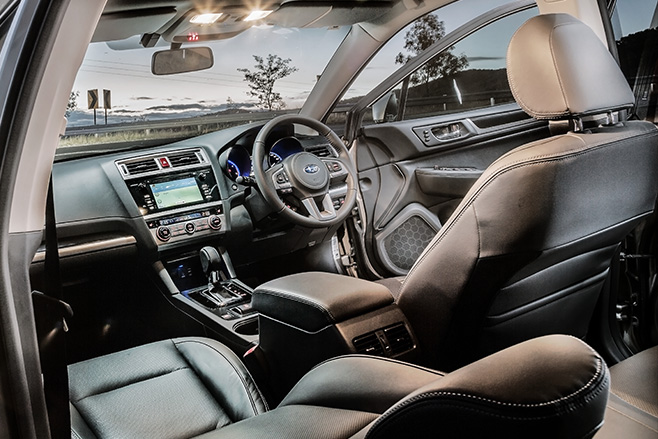
The best thing about the Citroen is that it’s hard to categorise. Much sexier than an MPV, yet similarly space efficient, it’s a surprising contender in the fun-to-drive stakes, and it’ll have design types all aflutter with its quirky, airy, interesting interior. But its cabin materials aren’t quite up to PSA’s recent best, and its seats and ride comfort could use some finessing, to the benefit of overall passenger comfort. It also has a pretty dismal projected three-year resale value (44 percent), though its six-year, unlimited-kilometre warranty provides hope, as does Citroen Australia’s revival of fortunes since joining management forces with Peugeot.
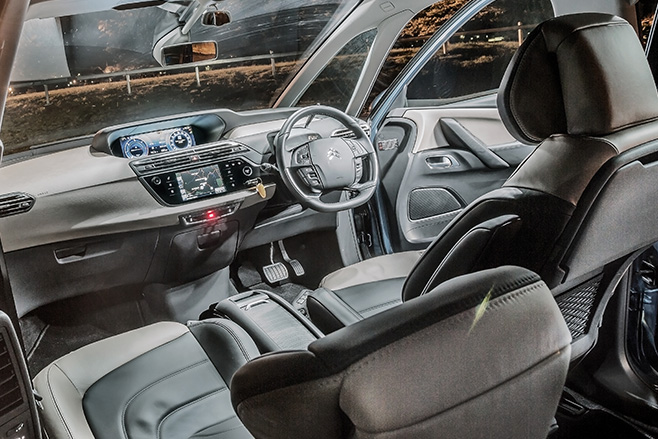
Yet Mondeo misses exactly where the 6 scores, making this test an extremely close one to call. The Mazda is a fine wagon and an almost classless object of desire, mixing Japanese reliability with Euro-style design flair. As a neat wagon for an active couple, it triumphs. But if you want your wagon to cop everything your family can throw at it, balanced with the stress-reducing qualities of class-leading comfort and refinement, the Mondeo remains unmatched.

